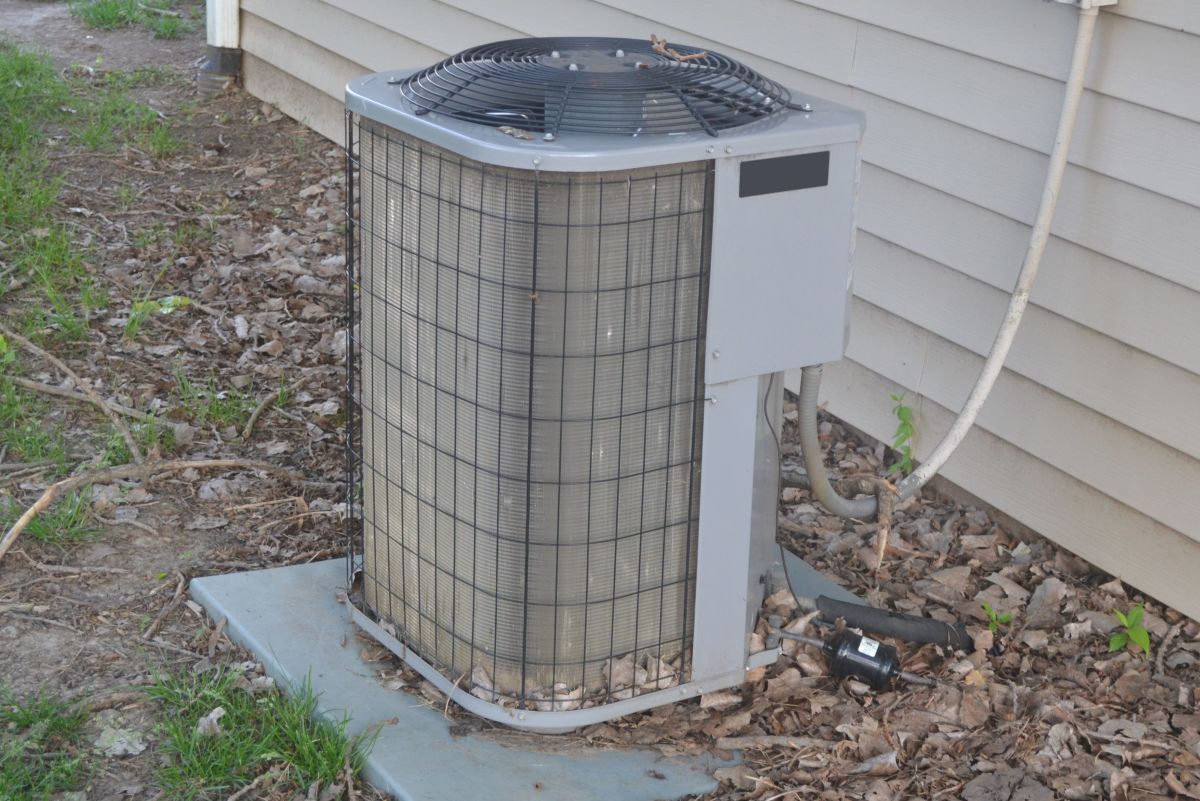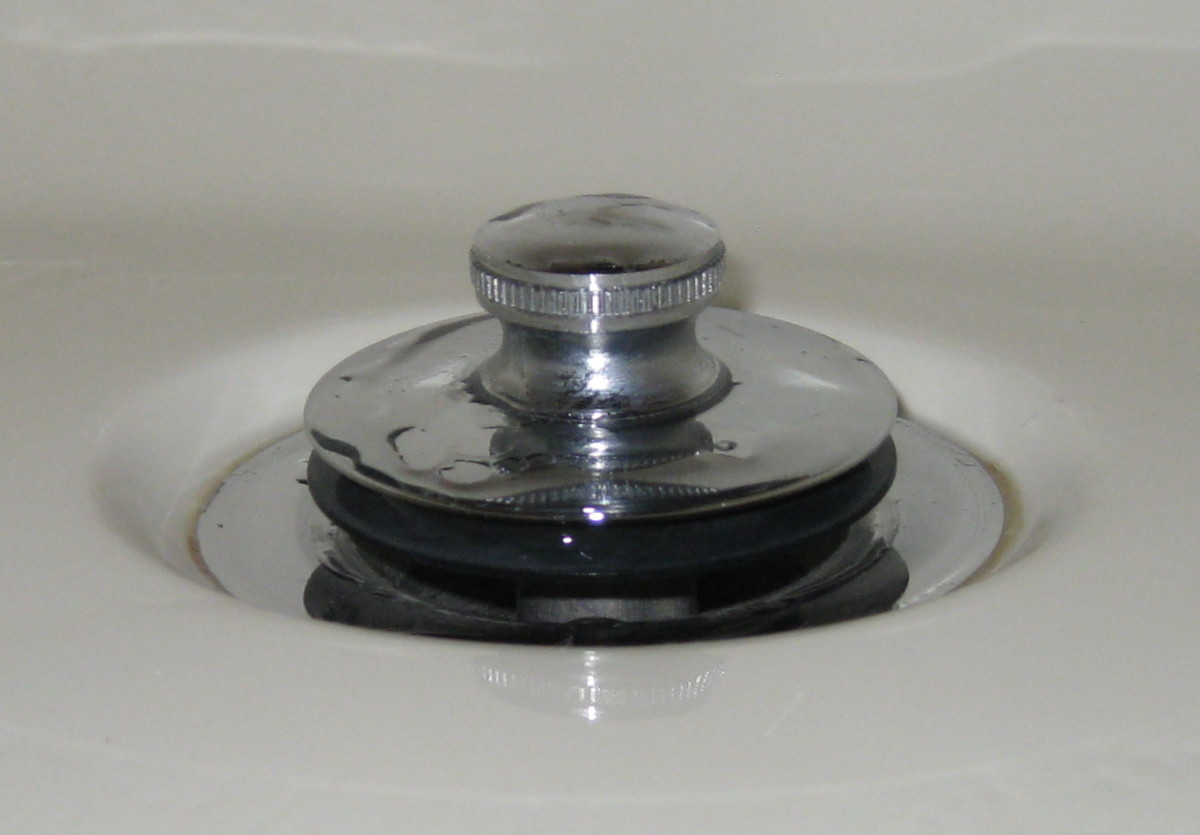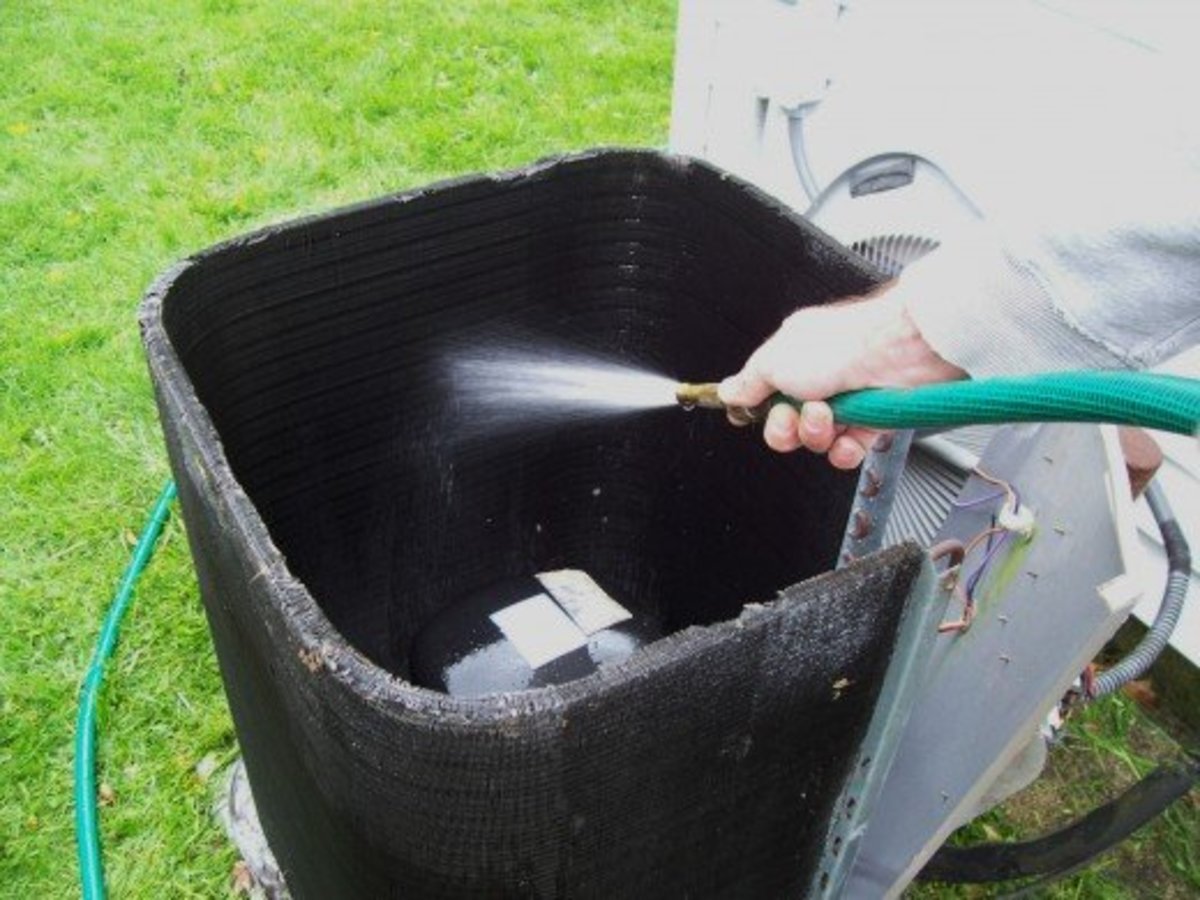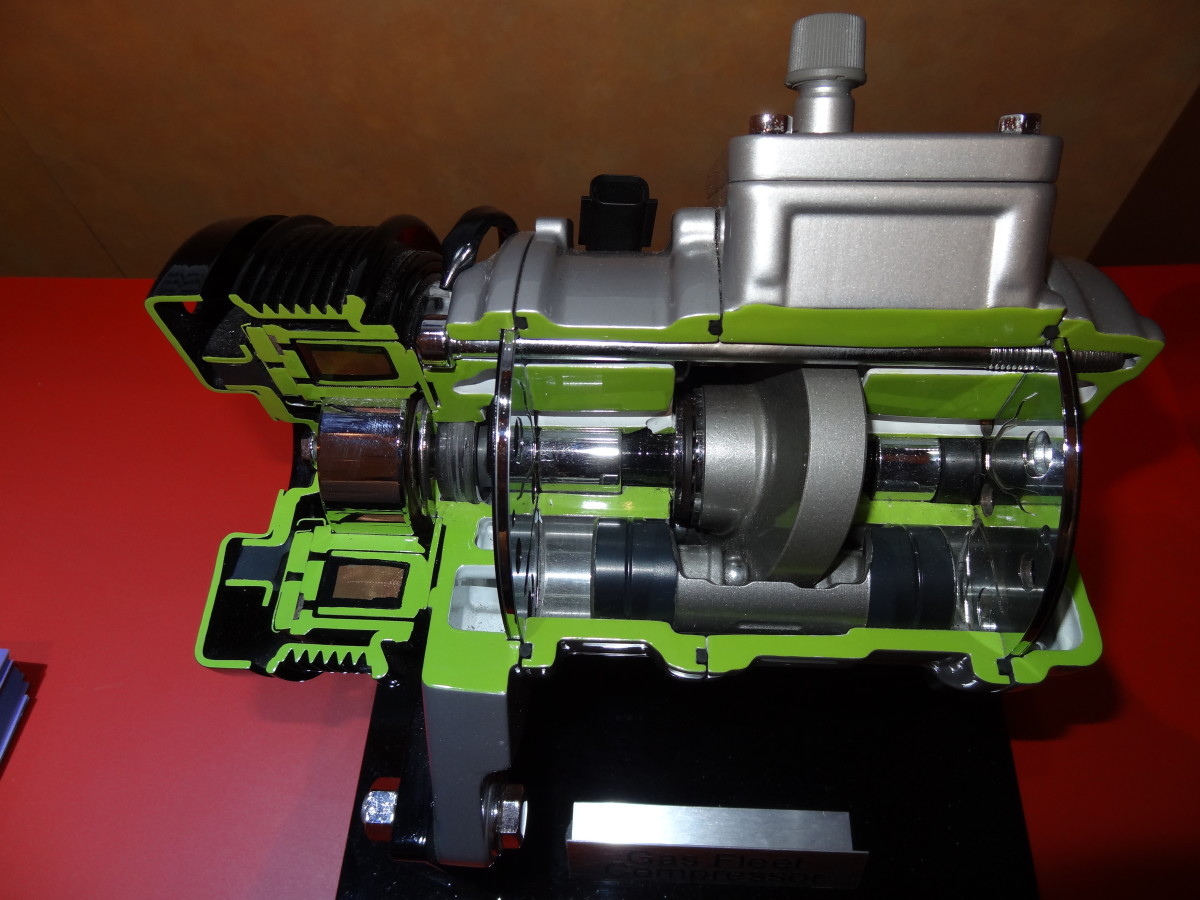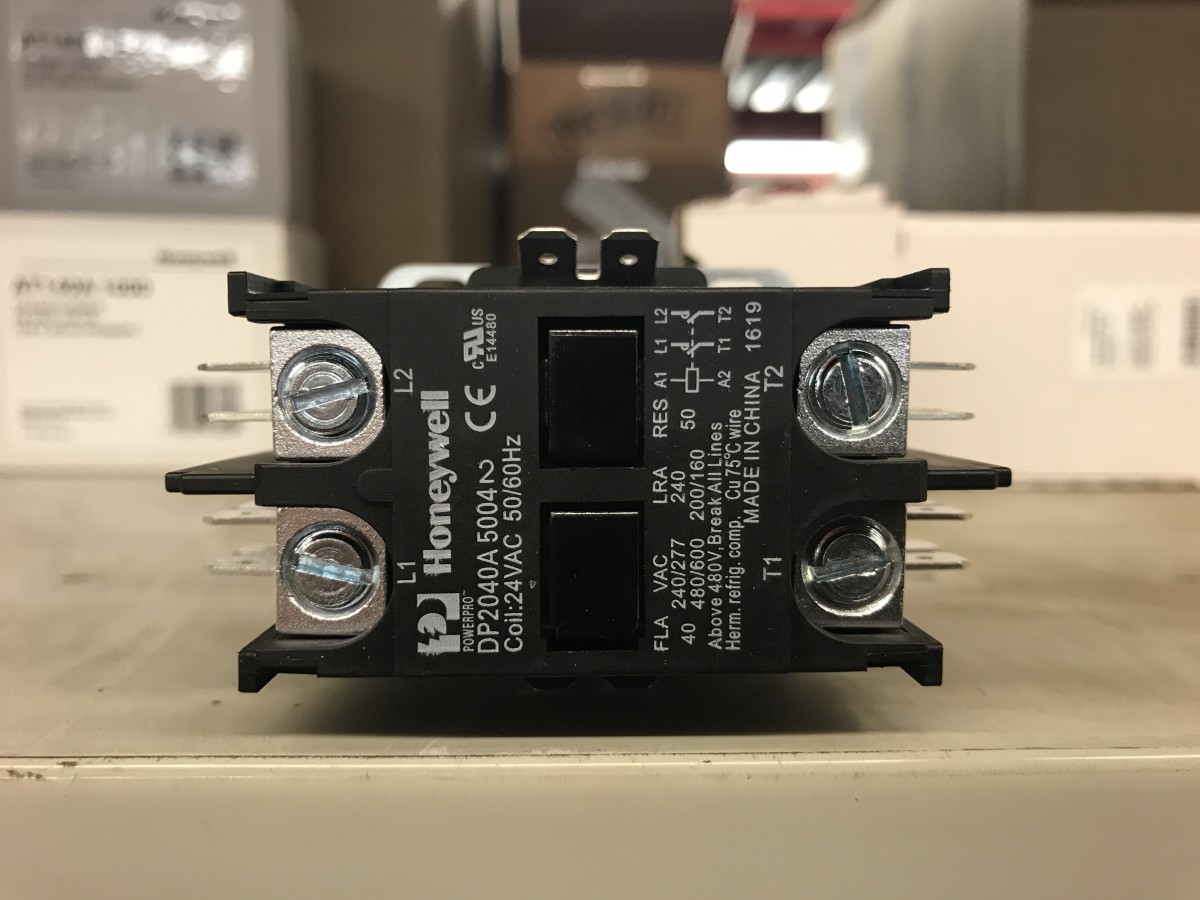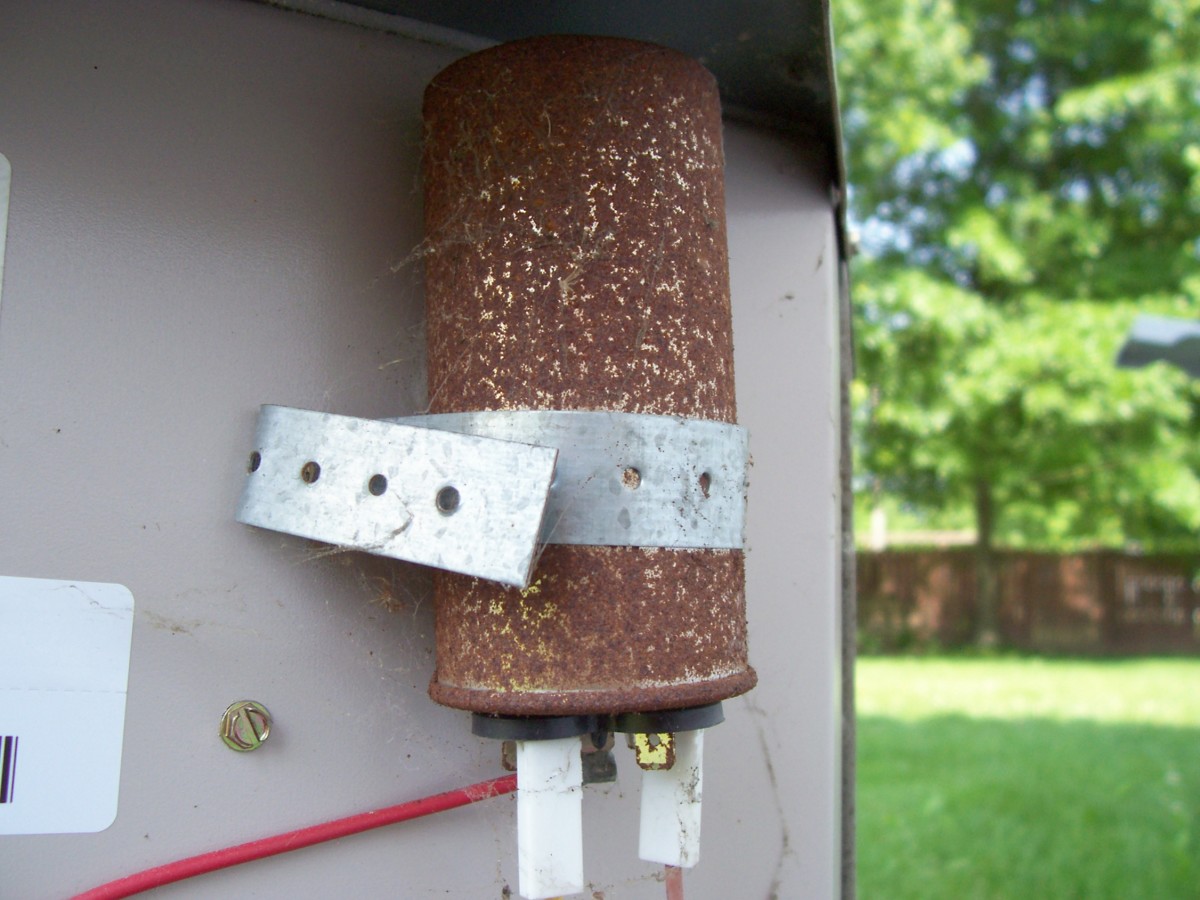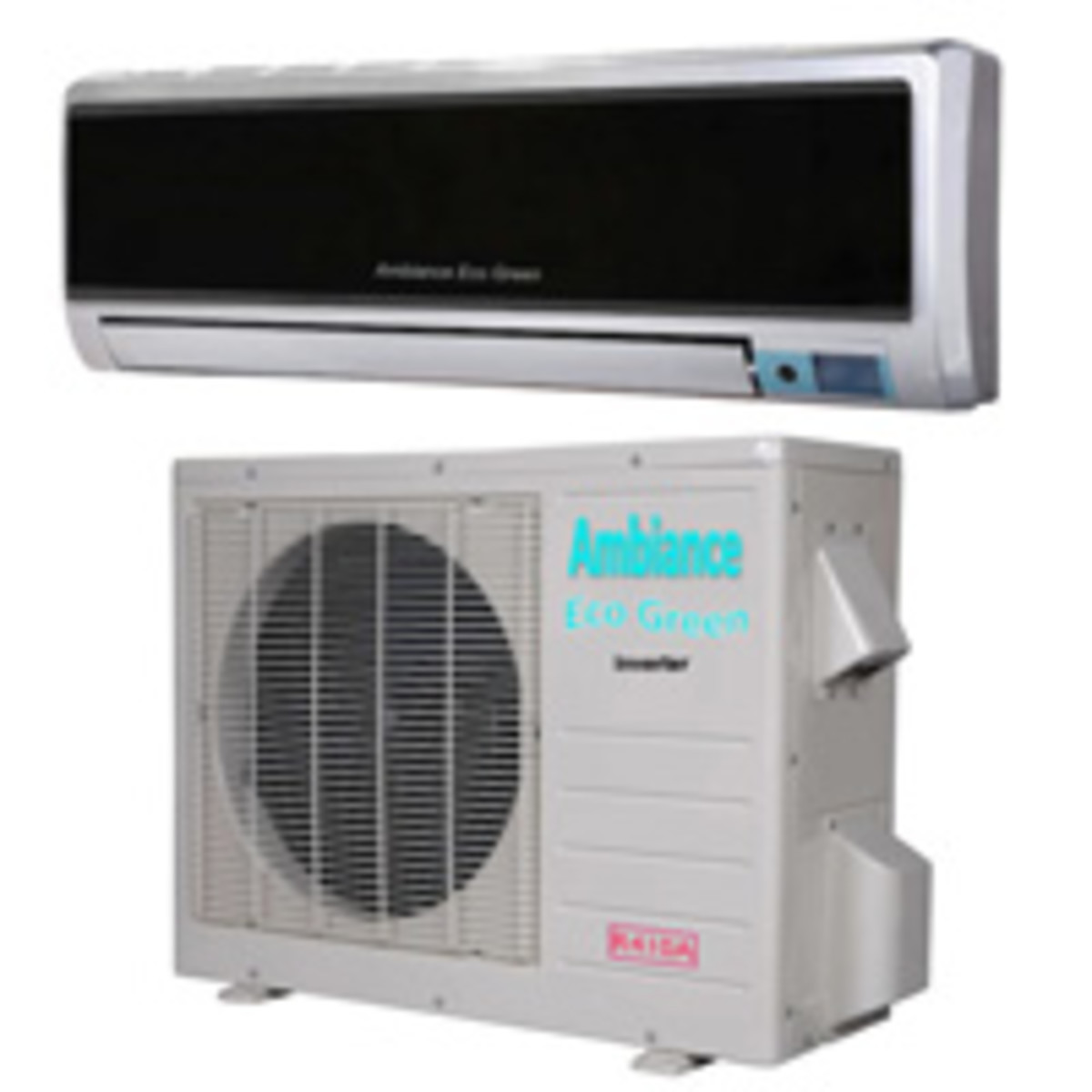Troubleshooting Your Home Central Air Conditioner: slow refrigerant leak and clogged condensate drain
My air conditioning system is quite old, as is my house. It runs on R21 refrigerant, which is in the gradual process of being phased out. The only relatively new portion is the compressor, which I replaced in 2008. We will address/describe two problems I had at the end of last summer (2015), which were recently corrected. Refer to the basic diagram which depicts general function.
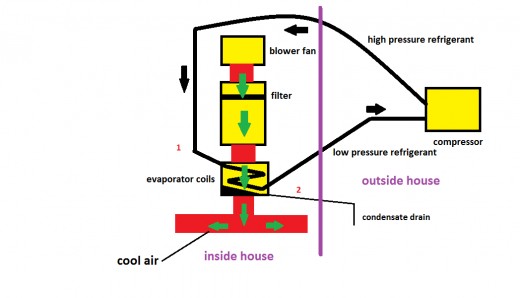
Basic System Function
I am by no means and expert, but do understand basic function of the system. The compressor pressurizes refrigerant on the high side. The blower pulls "warm" air through the filter and over the evaporator coils. Refrigerant boils within the coils, drawing energy from the air and thus cooling it. The cool air then flows through the ducting to vents throughout the house. In addition, liquid condensate (water) flows out of the triangular depicted drain pan to the outdoors.
Issue #1 Identified
The first issue I encountered was that the condensate drain just outside the house had stopped draining water. I went into the crawl space to inspect, where I found/saw water dripping off of the evaporator housing. It had formed puddles, so was obviously not flowing down/out the condensate drain line. The cause was a clogged line, which can occur over time. Sludge had built up and needed to be removed. The fix was quite easy. A shop vacuum was placed/secured over the drain pipe opening and the clog/sludge "sucked out". After that, condensate began to flow out of the system correctly. Another option is to use a pressurized CO2 cartridge blast at the drain pipe opening, to accomplish the same effect in reverse fashion.
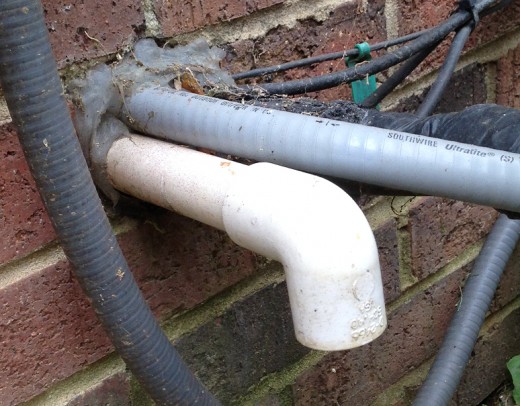
Issue #2 Identified
Secondly, I had noted the system was not cooling as well as it had been. A service professional came out, and told me that the system was leaking refrigerant somewhere, as it had lost about two pounds. He suggested a test involving injection of blue die into the system, which would later, after about 2 weeks, be visible at the leak site. The leak, shown in the accompanying photo, was identified at a joint/coupling outside the evaporator. There was a faint blue signature, not seen on the now repaired joint in the photo. In addition, soapy water was applied to the suspect area. Bubbles were seen, cementing the diagnosis. The joint was repaired by re-welding.
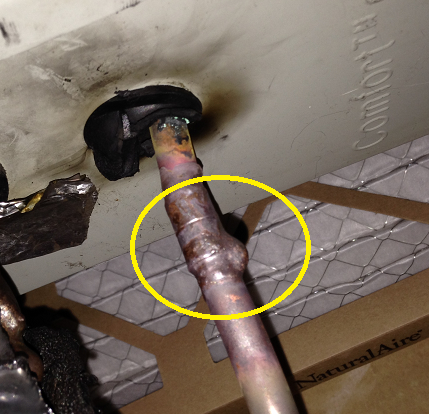
Total Cost
We learn a lot in diagnosing/fixing issues like these. One lesson learned, I could have saved money. Two companies were involved. The first, a local and fairly large company. Second, an experienced "mom and pop" guy who goes to my church. The larger company was one I had a service contract with. They vacuumed out the drain, did the die test and found the leak to the tune of about $400.00. A service call was scheduled for this spring to weld the joint. My friend at church suggested I let him take over from there. Cancel the service call and let him take care of it. He feels he could have identified the leak by focusing on the limited number of possible joints in the system, no die test required. He welded the joint and did my full spring functional check for $120.00. No yearly service contract required, he will just come by in the spring/fall to check the cooling/heating systems, unless something comes up in between in which case I can just call him. No pressure applied to purchase a new system, just keep this one running until I truly need to consider a new one,

